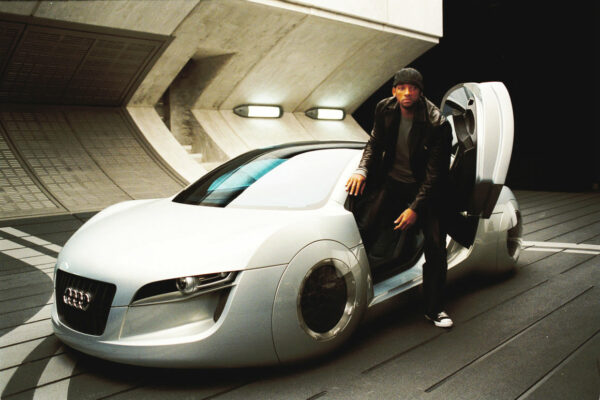
Cars are a part of our everyday lives, so they naturally make their way onto the big screen. Here, they serve not only as a means of transportation for the characters brought to life by various actors but also as an advertisement for the automakers who often generally pay for the honor or sometimes donate high-value vehicles. More often than not, these cars are not even the star of the show, such as the BMW E90 3 Series, which has featured in the background of Iron Man 2 and Mission Impossible – Ghost Protocol on the silver screen and Orange is the new Black and House of Cards on television. Yet, even in passing, they leave an impression, especially if they are attractive luxury models.
A Hint of What’s to Come
However, advertising isn’t the only thing car manufacturers are interested in when it comes to placing their products squarely in the public eye. The world of cinema is often a variation of the one we live in, so it’s a great place to try out new ideas. Automakers can review audience reactions and feedback to get a better idea of what might work in future models. The success of this approach can be seen in the latest Ford Bronco, which was teased as far back as 2004 before appearing in Rampage, starring Dwayne “The Rock” Johnson. The fact that the new Bronco that was released in 2020 looks slightly different could be attributed to how audiences around the globe reacted to the on-screen version.
At other times, on-screen cameos have been a great way to drum up consumer interest in limited-edition models based on popular franchises. Just look at the Jeep Wrangler Rubicon Tomb Raider, which is featured in the movie of the same name. By hitching its wagon to the well-known intellectual property, the automaker was able to create a niche model that was just different enough to feel special and which would appeal to fans of the video games and movies.
And, speaking of well-known IPs, the Marvel Cinematic Universe has seen a plethora of attractive cars put on display, most often by playboy-by-day Tony Stark who moonlights as superhero Iron Man. A prime example is the Audi e-tron GT, which was first debuted in 2018 before appearing in Avengers: Endgame. This was a great way to both gauge and engender interest in electric vehicles, which are bound to be the future of the automotive industry.
Imagining the Future
Screenwriters are quite talented at envisioning the possibilities of technology, and while not all of the fantastical notions they’ve come up with have come to fruition, many have or are just on the brink of becoming reality. We’ve also seen more than a few radical designs for cars of the future, which have been equally hit-and-miss. A great example of this is the movie Back to the Future, in which Marty McFly bears witness to a flying Mustang with outlandish styling. However, the aesthetics of this futuristic vehicle were never adopted, even as far down the line as the S-197 Mustang that was released 20 years later.
By comparison, far more technological advances have transitioned from mere science fiction to actual reality over the years. True, we don’t have time-traveling Delorians or even hovercars, but we have experimented with biofuels, and there are even a few modern hydrogen-powered vehicles similar to those teased in movies like The Minority Report. Similarly, satellite GPS was considered military-grade tech in Goldfinger, but in-car navigation is now obsolete when we have the world on our cell phones.
Another much-anticipated technology is that of the self-driving car. Just about any sci-fi movie or TV show has features these dream cars in some form or another. Judge Dread dread had its ominous Land Rover Discovery, while another Sylvester Stalone movie, Demolition Man, had a General Motors Ultralite concept vehicle with automated driving. Of course, a more recent and thrilling imagining is the Audi RSQ from I, Robot.

Art in Motion
While vehicles are not often the stars in motion pictures, save for rare exceptions like the 1983 adaptation of Stephen King’s Christine, Herbie from 1968’s The Love Bug, or Chitty Chitty Bang Bang from the same year, they still play a vital role in setting the scene. After all, what would Greased Lightning have been without the Ford Deluxe, or any of the many Fast & Furious movies without the high-performance, horsepower-spewing, suped-up street cars?
The automobile has always been as much about practical transportation as modern art and fashion trends. Hand in hand with screenwriters and directors, the automotive industry has pushed the boundaries of what is possible or popular over the years, and it isn’t likely to stop anytime soon. It will certainly be interesting to see what new and interesting ideas the creative types come up with once we finally have self-driving flying cars.
While we probably can’t hope to own a Bumblebee from Transformers, truly smart cars that communicate with one another, city infrastructure, and even the internet at large are quite possible. Soon, our cars will be like second homes and extensions of our cellular phones, all rolled together.


I have a 1980 Mercedes’ 450 SL that I’m willing to sell for use in film
Silver blue